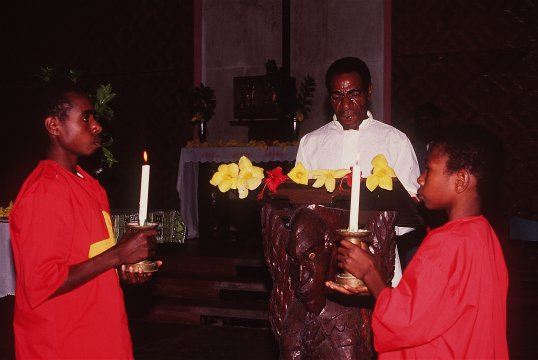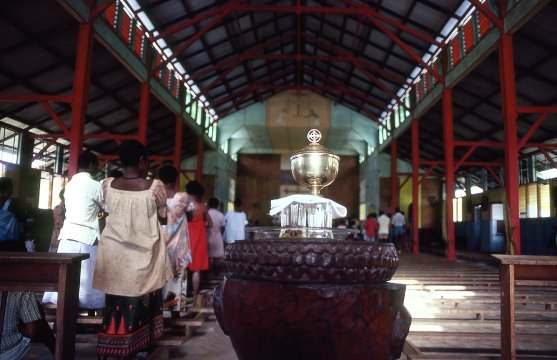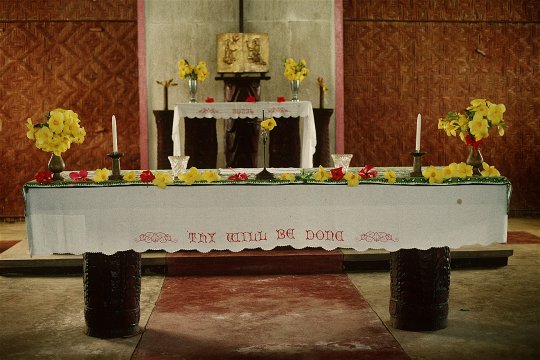|
John Tyman's Cultures in Context Series Torembi and the Sepik A Study of Village Life in New Guinea |
|
Topic No. 18: The Christian Church ~ Photos 348 - 362 |
|
John Tyman's Cultures in Context Series Torembi and the Sepik A Study of Village Life in New Guinea |
|
Topic No. 18: The Christian Church ~ Photos 348 - 362 |
 |
| 348. The greatest agent of change here, till recently, was the Christian Church – with its gospel of forgiveness and love. |
 |
| 354. Mass is celebrated here each Sunday, the deacon using the reserved sacrament when the priest is away. |
 |
| 359. The interior of the church is decorated with a bronze crucifix and a brass tabernacle: and the inscription on the cloth covering the altar is in English. |

![]()
Text, photos and recordings
by John Tyman
Intended for Educational Use
Only.
Copyright Pitt Rivers Museum,
Oxford University, 2010.
Contact Dr.
John Tyman for more information regarding licensing.
![]()
Photo processing, Web page layout,
formatting, and complementary research by
William Hillman ~ Brandon, Manitoba
~ Canada
www.hillmanweb.com